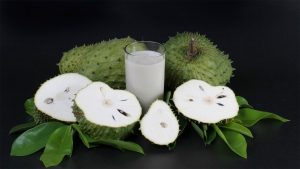
39 interesting facts about cake
440
Cakes have been an essential part of human culture and celebrations for centuries. These delicious treats come in a vast array of flavours, shapes, and sizes, and they can mark occasions from birthdays to weddings. The history of cake baking is rich and diverse, influenced by various cultures and culinary techniques. As an art form, cake decorating has evolved into a highly creative endeavour, with elaborate designs that astonish and delight. Below are more than 39 interesting facts about cakes that illustrate the allure and fascination of these beloved desserts.
- The word “cake” comes from the Old Norse word “kaka.”
- The Ancient Egyptians were the first culture to show evidence of advanced baking skills.
- Cakes were initially baked in Ancient Greece using flour mixed with honey and eggs.
- Cheesecake is believed to have been served to athletes at the first Olympic games in 776 B.C.
- In Medieval England, cakes were typically flat and round with a hard, unleavened texture.
- The world’s largest wedding cake weighed 6.818 tonnes and was made in Massachusetts in 2004.
- Fruitcakes were a symbol of prosperity and were often saved to be eaten on a future special occasion.
- The world’s most expensive cake was priced at $75 million, created by a British designer and adorned with diamonds.
- The custom of putting candles on a birthday cake dates back to Ancient Greece.
- The tradition of a wedding cake comes from Ancient Rome, where a loaf of bread was broken over the bride’s head for good luck.
- In the 18th century, sugar was a luxury item, so elaborate icing was a status symbol.
- Cupcakes originated in the United States in the 19th century.
- Pound cake is named for its original recipe, which called for a pound each of butter, eggs, sugar, and flour.
- Red velvet cake’s red colour originally came from the reaction between acidic vinegar and buttermilk with natural cocoa powder.
- Angel food cake is named because of its airy lightness, and it was said to be the “food of the angels.”
- Carrot cake dates back to medieval times when sweeteners were scarce, and carrots provided sweetness.
- The layered structure of cakes became popular in the mid-19th century when baking powder was invented.
- Bundt cakes are named after the Bundt pan, which was created in 1950.
- The first known cake mix was introduced by General Mills in 1948.
- Baking a cake with a file inside to help someone escape prison was a real method used during the 19th century.
- In Japan, Christmas cake is traditionally eaten on Christmas Eve.
- The traditional wedding cake in Norway, called “Kransekake,” is made of iced almond cake rings built into a tower.
- Chocolate cake was first made in America, where Dr. James Baker learned to grind cocoa beans between two massive circular millstones.
- Marie-Antoine Carême, an early pioneer of grand decorative pastry, established many modern cake-making techniques.
- Traditional German Black Forest cake must contain Kirsch, a clear cherry schnapps.
- Fruitcake is often associated with Christmas in many Western countries.
- In the UK, the Sunday before Easter is known as “Simnel Sunday” because of the tradition of baking Simnel cakes.
- Cheesecake recipes have been found from Ancient Greece and were even included in the first cookbook ever written in the 1st century A.D.
- During the English Civil War, Oliver Cromwell banned the eating of cake as it was considered a Pagan form of pleasure.
- A traditional Chinese wedding cake is often steamed instead of baked.
- The Génoise sponge cake was named after Genoa, Italy, and is often used in French confections.
- The infamous “death by chocolate” cake is typically made with layers of different chocolate varieties and ingredients.
- The collapse of a soufflé cake is not due to a loud noise but a temperature change.
- Many believe that the Hummingbird cake, made with bananas and pineapples, is named because it’s sweet enough to attract hummingbirds.
- The use of beet juice in Red Velvet cake not only adds colour but also helps retain moisture.
- In Australia, Lamington cake, made from squares of sponge cake coated in chocolate sauce and coconut, is a popular treat.
- The French King Louis XVI’s wife, Marie Antoinette, never actually said, “Let them eat cake” when referring to her starving subjects.
- Many contemporary cakes are inspired by the art of different cultures, including henna designs or traditional Japanese patterns.
- The classic opera cake is made with layers of almond sponge cake soaked in coffee syrup, layered with ganache and coffee buttercream.
Cakes not only provide a delectable treat for our taste buds but also carry an intriguing history that reflects human culture, traditions, and innovation. From Ancient Egypt to modern culinary art, cakes have evolved into multifaceted expressions of creativity and joy. These diverse and fascinating facts about cakes showcase their rich legacy, timeless appeal, and the unique ways they continue to mark our lives’ significant moments. Whether served at a grand celebration or enjoyed with a cup of tea, cakes undoubtedly hold a special place in our hearts and on our tables.
 MillionFacts
MillionFacts 
 Related posts
Related posts 











